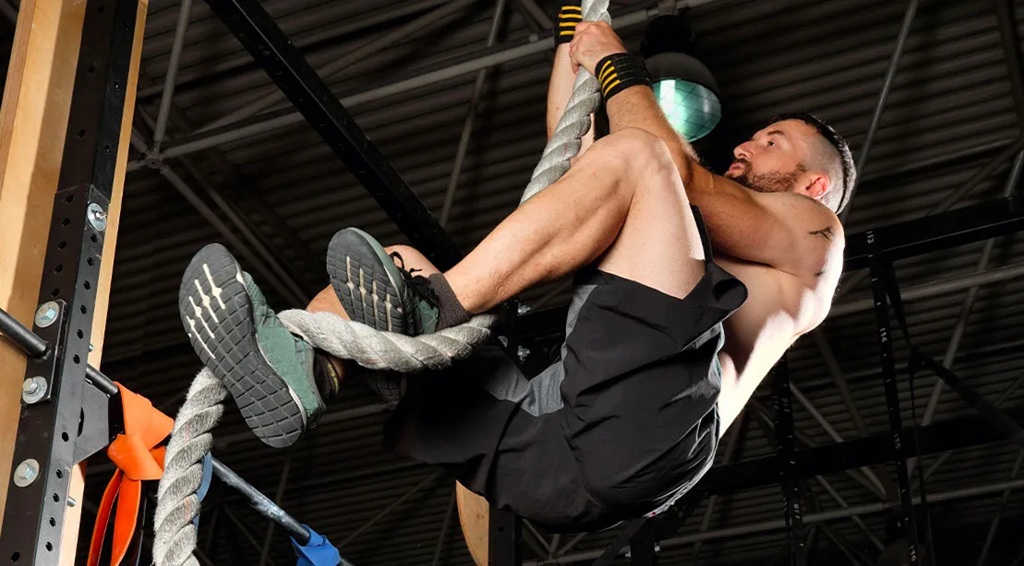When it comes to functional fitness tools, ropes stand out as versatile and effective equipment. While battle ropes and climbing ropes may appear similar at first glance, they serve entirely different purposes in fitness routines. Each type of rope has its own unique design, use cases, and benefits. Whether you’re looking to build explosive power or test your grip strength, knowing the differences between battle ropes and climbing ropes can help you make an informed choice.
Let’s dive into a comprehensive comparison of these two fitness tools, exploring their features, applications, benefits, and more. If you’re ready to elevate your training regimen, it’s time to explore Yifarope to find ropes designed specifically for your needs.
What Are Battle Ropes?
Battle ropes are heavy, durable ropes often found in gyms and functional fitness centers. They are typically made from synthetic materials such as poly dacron or nylon, which makes them strong and resistant to wear and tear.
Unlike traditional ropes, battle ropes are used primarily for dynamic, high-intensity workouts that involve repetitive whipping, slamming, and undulating movements. They’re available in various lengths, diameters, and weights, allowing users to customize their workouts based on fitness levels and goals.
Key Features of Battle Ropes
- Material: Typically made from synthetic fibers for durability and flexibility.
- Length: Ranges from 30 to 50 feet, with longer ropes offering greater resistance.
- Diameter: Commonly 1.5 to 2 inches, impacting grip strength requirements.
- Purpose: Focuses on cardiovascular endurance, explosive strength, and coordination.
Battle ropes engage the entire body, making them ideal for metabolic conditioning. Unlike stationary exercises, battle rope training mimics real-life movements, improving functional fitness and agility.
What Are Climbing Ropes?
Climbing ropes, on the other hand, are specifically designed for ascending, descending, and suspension activities. These ropes are a staple in obstacle courses, CrossFit gyms, and even traditional climbing sports. They are typically crafted from natural fibers like manila or synthetic materials such as polyester, offering a balance of durability, grip, and strength.
Unlike battle ropes, climbing ropes are static or semi-static, meaning they have limited elasticity. This characteristic provides stability and safety when bearing the weight of a climber. Climbing ropes require upper body and core strength, making them a fantastic tool for building muscular endurance and grip strength.
Key Features of Climbing Ropes
- Material: Often made from manila or synthetic fibers for a secure grip.
- Length: Typically 10 to 30 feet for gym use, but climbing sports may require ropes up to 200 feet.
- Diameter: Usually 1.25 to 2 inches for optimal grip.
- Purpose: Designed for ascending, descending, and grip-focused training.
Climbing ropes bring a unique challenge to fitness enthusiasts. They demand not only physical strength but also coordination and technique to execute climbs effectively.
Design and Construction: A Closer Look
While both types of ropes are built for heavy use, their construction differs significantly. Battle ropes prioritize flexibility, while climbing ropes focus on safety and tensile strength.
Battle Rope Construction
- Made from synthetic materials that resist fraying.
- Flexible yet heavy to enable fluid motion during training.
- Often coated at the ends for improved grip and durability.
Climbing Rope Construction
- Crafted from natural or synthetic fibers for optimal friction and grip.
- Static or semi-static to ensure safety during weight-bearing activities.
- Often treated with water-resistant coatings for outdoor use.
The differences in construction underscore the varied functions these ropes serve. While battle ropes are built to move, climbing ropes are built to hold.
Benefits of Training with Battle Ropes
Battle ropes are an excellent choice for anyone looking to improve cardiovascular fitness, strength, and endurance. Their versatility makes them a go-to tool for high-intensity interval training (HIIT) and metabolic conditioning.
Key Advantages
- Full-Body Workout: Engage your arms, shoulders, core, and legs in every session.
- Improved Cardiovascular Health: High-intensity exercises get your heart rate up.
- Fat Loss: Studies show that HIIT workouts burn calories more efficiently than steady-state cardio.
- Enhanced Coordination: Alternating waves and slams improve timing and rhythm.
According to a 2015 study published in the Journal of Strength and Conditioning Research, battle rope training significantly increases oxygen consumption and energy expenditure. It’s no wonder why they’ve become a favorite among athletes and fitness enthusiasts alike.
Benefits of Training with Climbing Ropes
Climbing ropes may not offer the same level of versatility as battle ropes, but they shine in specific areas of fitness. These ropes are all about grip strength, upper body endurance, and functional movement.
Key Advantages
- Grip Strength: Climbing ropes challenge your ability to hold and maneuver your body weight.
- Muscle Development: Target lats, biceps, forearms, and core muscles.
- Mental Toughness: Climbing requires focus, discipline, and perseverance.
- Functional Fitness: Develop skills that translate to real-world tasks.
Whether you’re preparing for a Spartan Race or simply want to add a challenging element to your workout, climbing ropes deliver unparalleled results.
Ease of Setup and Usage
Battle Ropes
Setting up battle ropes is straightforward. Simply anchor the middle of the rope to a secure point—such as a heavy kettlebell or specialized rope anchor—and you’re ready to go. Battle rope exercises are easy to learn, making them beginner-friendly.
Climbing Ropes
Climbing ropes require a sturdy anchor point, such as a beam or ceiling hook. Proper installation is crucial to ensure safety, especially when the rope is used for weighted climbs. If you’re interested in exploring more about fitness rope installations, consider this guide on yoga rope wall installation to better understand secure setups.
Common Workouts for Each Type of Rope
Battle Rope Workouts
- Alternating Waves: Build endurance and improve coordination.
- Slams: Develop explosive power in your arms and core.
- Side-to-Side Waves: Engage obliques and enhance rotational strength.
Climbing Rope Workouts
- Rope Climbs: Test grip strength and upper body endurance.
- Hanging Leg Raises: Build core stability while suspended.
- Pull-Ups: A challenging variation that incorporates the rope’s instability.
Who Should Use Battle Ropes?
Battle ropes are perfect for individuals who want to incorporate cardio and strength training into one session. Whether you’re a beginner or an advanced athlete, battle ropes offer scalable intensity to match your fitness level. They’re ideal for HIIT enthusiasts, CrossFit athletes, and anyone looking to improve overall endurance.
Who Should Use Climbing Ropes?
Climbing ropes are best suited for those with a solid foundation of upper body and core strength. They’re an excellent choice for obstacle course racers, rock climbers, and gymnasts. Beginners can also use climbing ropes but should focus on mastering technique and safety first.
Related: How to Adjust Skateboard Trucks for Stability: A Pro’s Guide
Cost and Durability: Which One Offers More Value?
While both ropes are an investment, battle ropes are generally more affordable due to their simpler construction. Climbing ropes, on the other hand, often cost more because of their specialized materials and safety features.
Battle Ropes
- Affordable and widely available.
- Durable with minimal maintenance.
Climbing Ropes
- Higher cost due to advanced safety standards.
- Require regular inspection for fraying or damage.
Which One Should You Choose?
Choosing between battle ropes and climbing ropes depends on your fitness goals. If you want an intense cardio workout that builds overall strength, battle ropes are the way to go. If your focus is on grip strength, upper body endurance, and functional movement, climbing ropes are the better option.
FAQs
What length of battle rope should I use?
A 50-foot battle rope is ideal for most users, as it provides a balance between resistance and flexibility.
Can beginners use climbing ropes?
Yes, but beginners should focus on technique and safety to avoid injuries.
Are battle ropes good for weight loss?
Absolutely. Battle ropes are excellent for burning calories and improving metabolic health.
How do I maintain climbing ropes?
Inspect them regularly for frays and store them in a dry place to prevent damage.
Can I use battle ropes outdoors?
Yes, but ensure they are made from water-resistant materials.
What’s the best material for climbing ropes?
Manila and synthetic fibers like polyester are popular for their durability and grip.
Conclusion
Both battle ropes and climbing ropes are exceptional tools for fitness enthusiasts. While battle ropes prioritize dynamic, high-intensity workouts, climbing ropes emphasize strength and technique. Whether you’re whipping waves or scaling heights, these ropes challenge your body in unique ways, helping you achieve your fitness goals.












+ There are no comments
Add yours